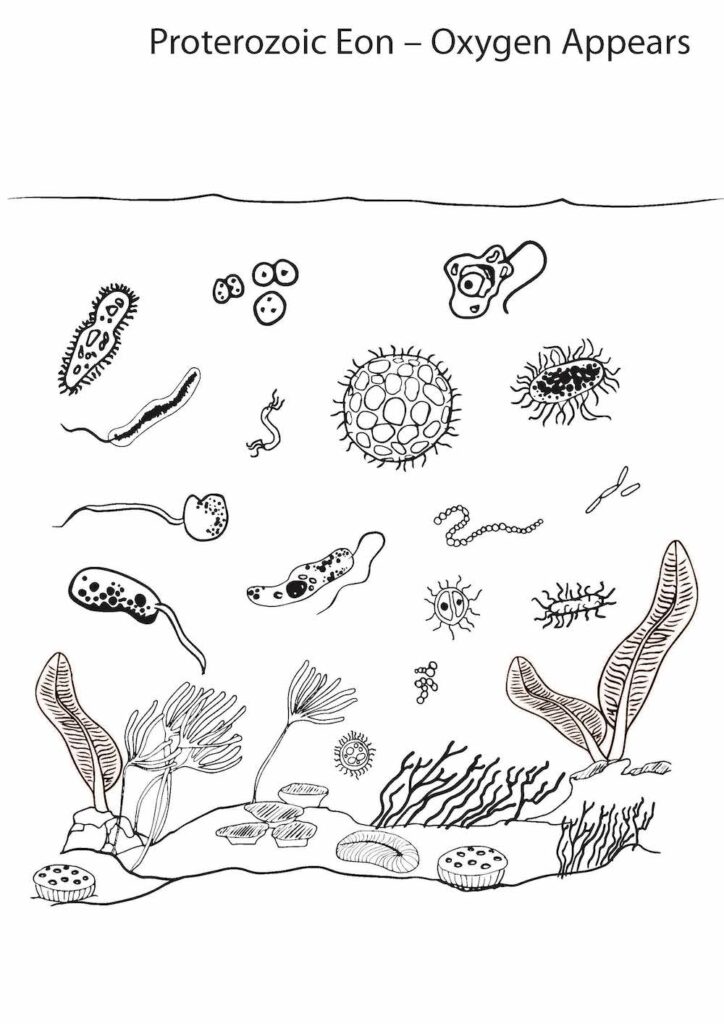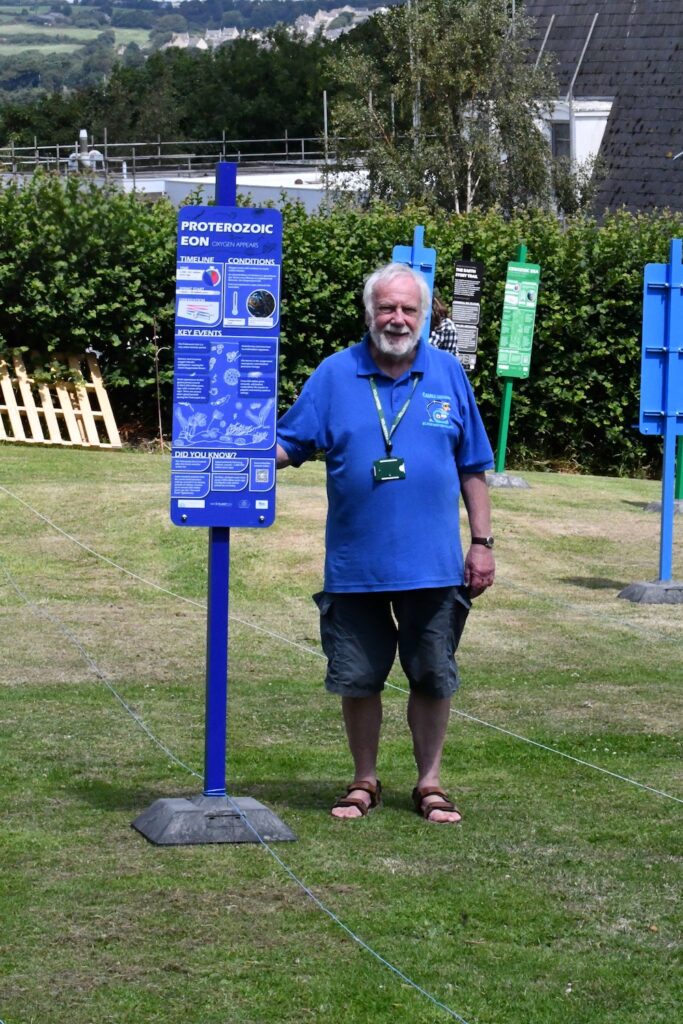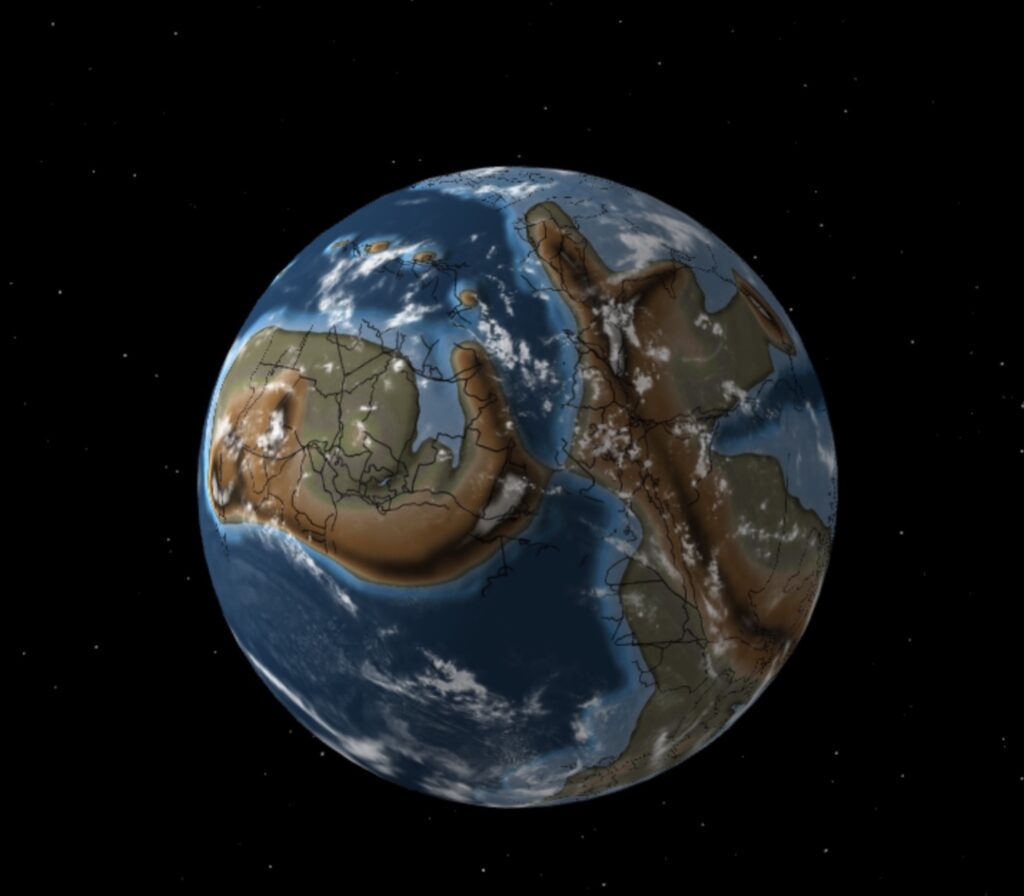Proterozoic Eon – Oxygen Appears
Key Events
- The Proterozoic Eon is a very active tectonic period.
- Evolutionary advances lead to multicellular organisms.
- Bacteria start to pump oxygen into the atmosphere, causing the ‘Great Oxygenation Event’.
- Life thrives in the oxygenated atmosphere and chemical processes change.
- Earth experiences its first glacial period around 2,450-2,220 million years ago, with a series of ice ages. There are several other glacial periods during the Proterozoic Eon.
- From 635 million years onwards, soft-bodied multicellular life (similar to jellyfish and worms) starts to emerge.

Facts, Debates & Trivia
- The Proterozoic Eon is named after the Greek word for ‘earlier life’
- Supercontinents form (e.g. Rodinia, around ~1,000-700 million years ago).
- Some scientists propose that the whole Earth becomes entirely covered in ice during periods of millions of years, up to around 650 million years ago (the ‘Snowball Earth’ hypothesis).
- On Mars, all liquid water dries up by 2,000 million years ago, leaving the cold, barren planet we see today.

Conditions
- Oxygen reacts with methane to create carbon dioxide.
- As concentrations of methane (a ‘greenhouse gas’ that is very effective at trapping heat) decrease, the temperatures fall.
- Iron is precipitated to make minerals like haematite.

Timeline
2,500-541 million years ago
(1,959 million years)


20 million years
Where have you reached on the trail?


